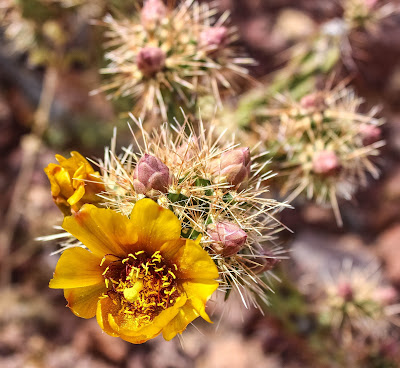Just two months ago I did a post on a
western red-tailed hawk I saw in southern Arizona. After a recent visit to El Pinacate and Gran Desierto de Altar Biosphere Reserve, about 50 miles south of there in Sonora, Mexico, I'm doing another one.
 |
| Western red-tailed hawk |
I arrived at the entrance to El Pinacate about 7:15 a.m. and found that it did not open until 8:00 a.m. So I got out of my car, parked in front of the gate across the road and sat at the base of a flag pole. I looked up and was shocked to see a huge hawk about 10 feet from me standing on a wood rail. I figured it must be injured and unable to fly. I got up and moved closer to it and it let me get very near before flying across the road and lighting on the ground.
I was doubly shocked, realizing this bird was not injured and was letting me get very near it. I walked across the road and followed it around for about 30 minutes as it walked along the ground, flew up on a roof, landed on some couches outside a home for the caretakers and then flew up on the flagpole.





I've never been anywhere near that close to a red-tailed hawk before. About 8:15 one of the park employees came out, saw me and told me he would let me in. Contrary to the sign, he said it did not open until 9:00 a.m. I asked him if the hawk was a pet and he said "no." Its name is Pancho and it was a pet to a very rich man that kept it cooped up and it could not fly. Pancho was confiscated and brought to them. They kept him inside for awhile and taught him to fly. Then they released Pancho and he stayed around that area, then left for a month or so, and came back. Pancho now lives independently but near them and will occasionally come back for a bite to eat. The man I was talking to described one of the other employees holding up a piece of chicken and having Pancho swoop down to grab it out of his hand. But Pancho does feed on his own and obtains most of his own food. He will allow several of them to pet his back occasionally.
 |
| I love Pancho's beautiful talons and large yellow feet. |
 |
| His striking red tail. |
 |
| His beak and sharp eyes. |
Pancho is a beautiful bird and that half hour following him around was worth the drive into Mexico.






























































